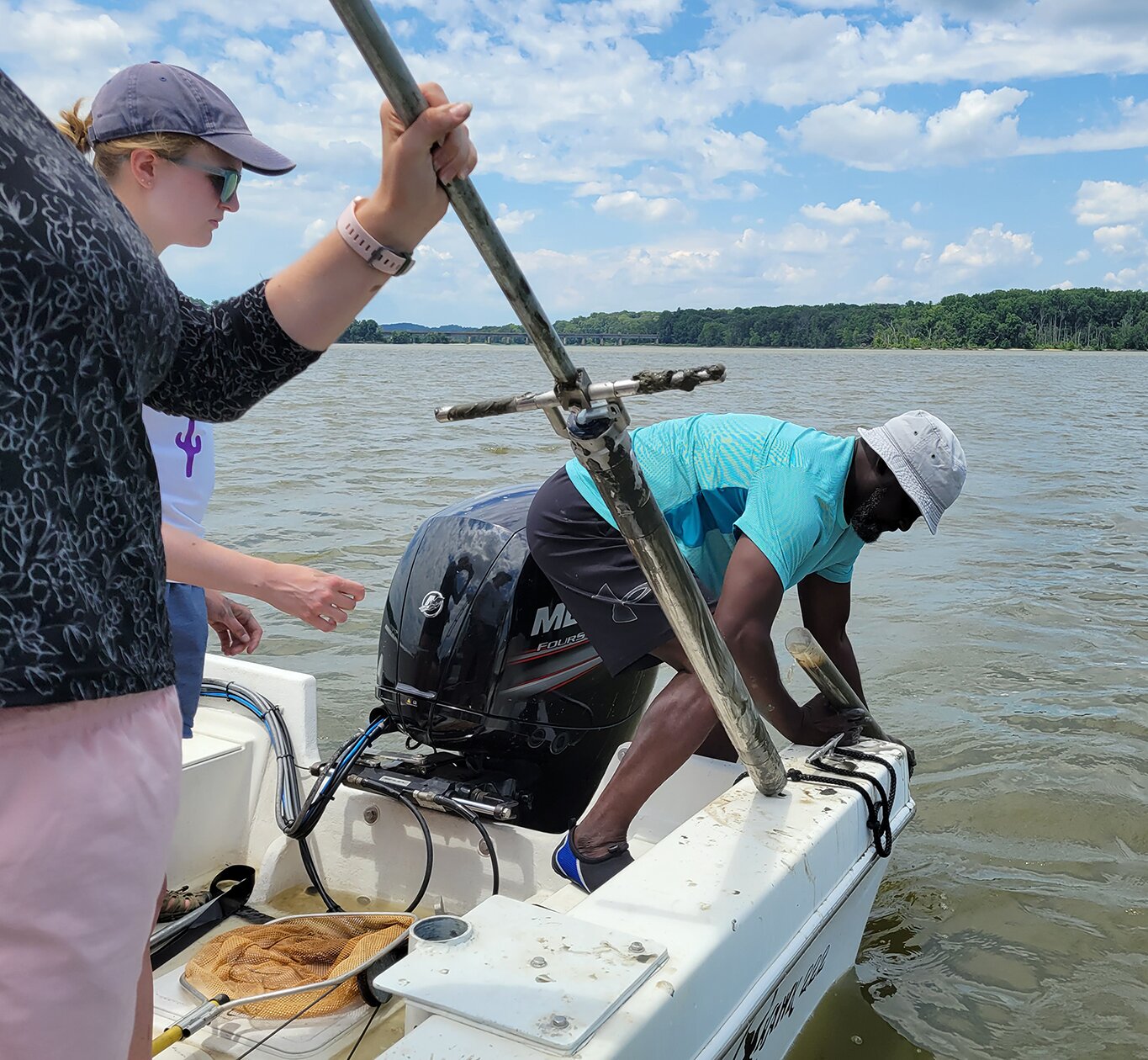

A recent study in Environmental Pollution unveils alarming discoveries: Researchers have identified cancer-causing contaminants in sediments and fish in a Chesapeake Bay tributary near a coal ash landfill.
The study, led by Dr. Tyler Frankel, the project’s principal investigator and Assistant Professor of Environmental Sciences at the University of Mary Washington, uncovered long-overlooked impacts of trace metal contamination on waterways and aquatic species adjacent to coal ash landfills. Frankel emphasized the study’s focus was on addressing the missing risk management component, spotlighting the role of sediments in storing, releasing, and transporting trace metals in aquatic ecosystems.
“These waterways serve as important routes for several migratory fish species and sensitive nursery habitats for various endemic species,” Frankel said. “Our work highlights the importance of considering this exposure pathway in conservation strategies.”
The research team examined water and sediment samples from aquatic environments surrounding five Virginia coal ash facilities. Coal ash, a prevalent industrial waste product produced in the United States, contains several water-soluble metals, including cadmium, selenium, mercury, lead, and arsenic. The study revealed significantly heightened concentrations of these trace metals in sediments at waterway bottoms and in banded killifish tissues near these coal ash landfills.
The implications are grave. Long-term exposure to metals like arsenic, cadmium, and chromium has been linked to cancer, increased cardiovascular risks, and other detrimental health issues, impacting both wildlife and humans. Furthermore, these contaminants increase in concentration as they progress up the food web, posing threats to predatory fish and birds, Frankel said.
“As the Chesapeake Bay watershed is one of the largest and most productive estuaries in the United States, understanding our impacts on its waterways is critical to the long-term stewardship of this precious resource,” Frankel added.
More information:
T.E. Frankel et al, Assessing the presence, concentration, and impacts of trace element contamination in a Chesapeake Bay tributary adjacent to a coal ash landfill (Possum Point, VA), Environmental Pollution (2023). DOI: 10.1016/j.envpol.2023.122768
Provided by
Morris Animal Foundation
Citation:
Researchers find cancer-causing metals in a Chesapeake Bay tributary adjacent to a coal ash landfill (2023, December 21)
retrieved 22 December 2023
from https://phys.org/news/2023-12-cancer-causing-metals-chesapeake-bay-tributary.html
This document is subject to copyright. Apart from any fair dealing for the purpose of private study or research, no
part may be reproduced without the written permission. The content is provided for information purposes only.





